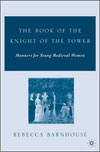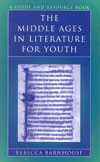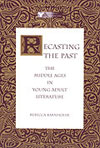The Book of the Knight of the Tower: Manners for Young Medieval Women.
Palgrave Macmillan, 2006.

In 1372 a French knight compiled a book of stories to teach his three daughters how to be good wives and good Christians. Here these tales are retold and interspersed with commentary about life in the late Middle Ages—what people wore, how they prayed, what they hoped for in this life and the next. The knight’s stories range from the shockingly bawdy to the deeply pious. They include devils and miracles, fashionable ladies and haughty knights, lecherous monks and disobedient wives—all told to help the knight’s daughters avoid what he calls blame, shame, and defame.
The Middle Ages in Literature for Young Readers: A Guide and Resource Book.
Scarecrow Press, 2004.
This comprehensive, practical guide summarizes and evaluates material about the medieval period written for children and teenagers, including picture books, novels, nonfiction, and reference books. Focusing on Western Europe in the years 500 – 1500, the book is conveniently organized around geographical locations, subjects, and time periods. Each section begins with a brief description of the historical period or group of people. A subject index gives further help to readers looking for particular topics. Works about the Middle Ages are described and evaluated in terms of content, age level, and accuracy. K – 12 teachers and public and school librarians will benefit from this work that will guide them to good books for the students they serve. They will also appreciate the sections of the book that describe professional resources, including books, articles, websites, and classroom activities.
Recasting the Past: The Middle Ages in Young Adult Literature.
Heinemann Boynton/Cook, 2000.
Writers of adolescent fiction have long mined the Middle Ages for settings and materials—without much regard for historical accuracy. Too often, they perpetuate anachronistic fallacies, allowing modern attitudes about such things as literacy and tolerance for diversity to enter their presentation. So how are you to know whether a book is accurate? Where else can you look? That’s where Recasting the Past steps in: both as a crash course in the Middle Ages and as a guide to some of the adolescent fiction set in this period.